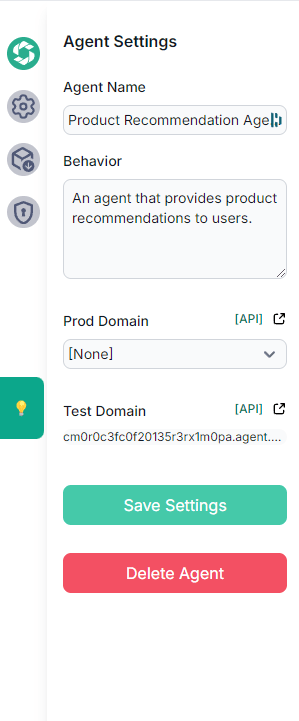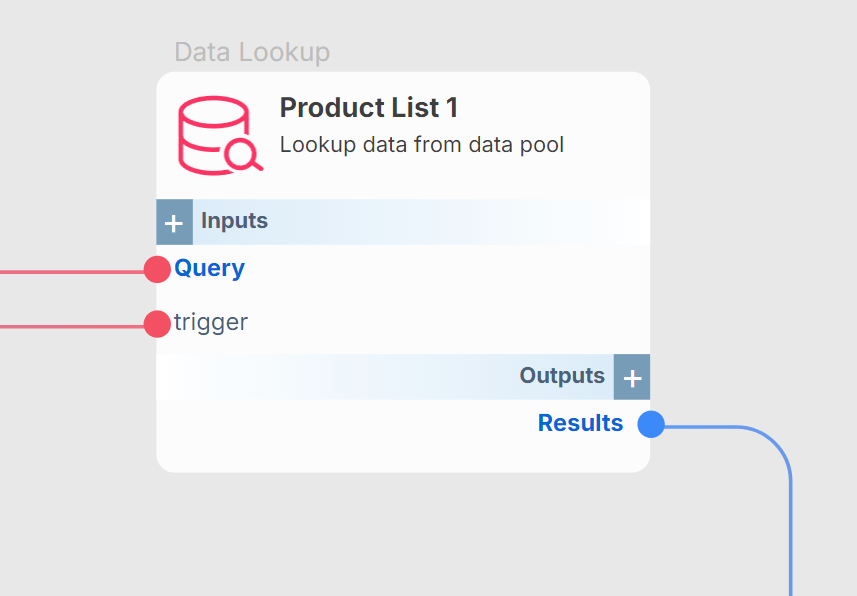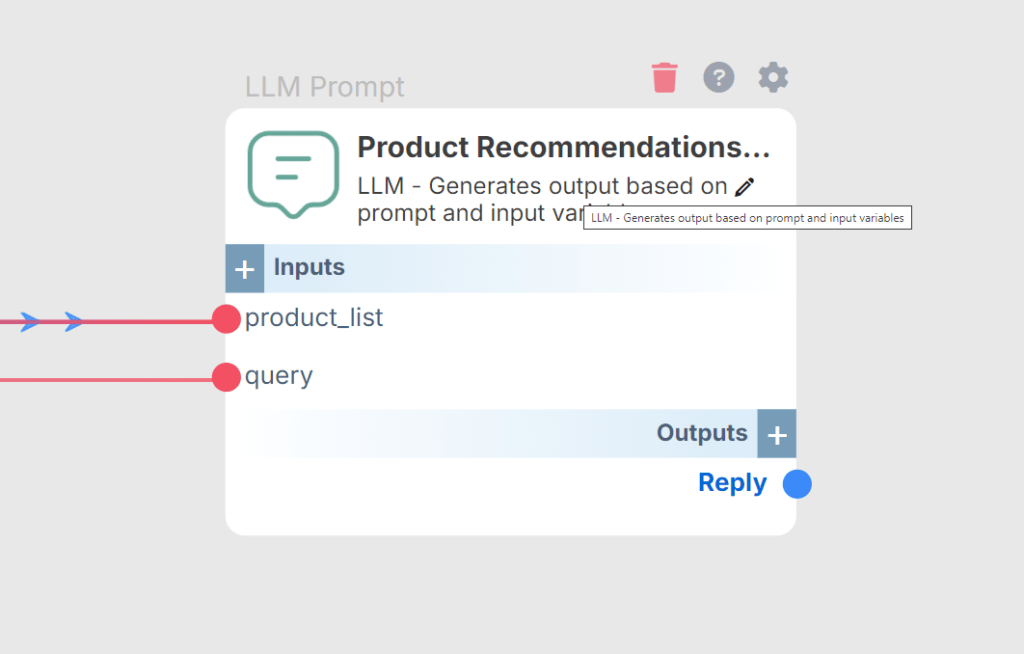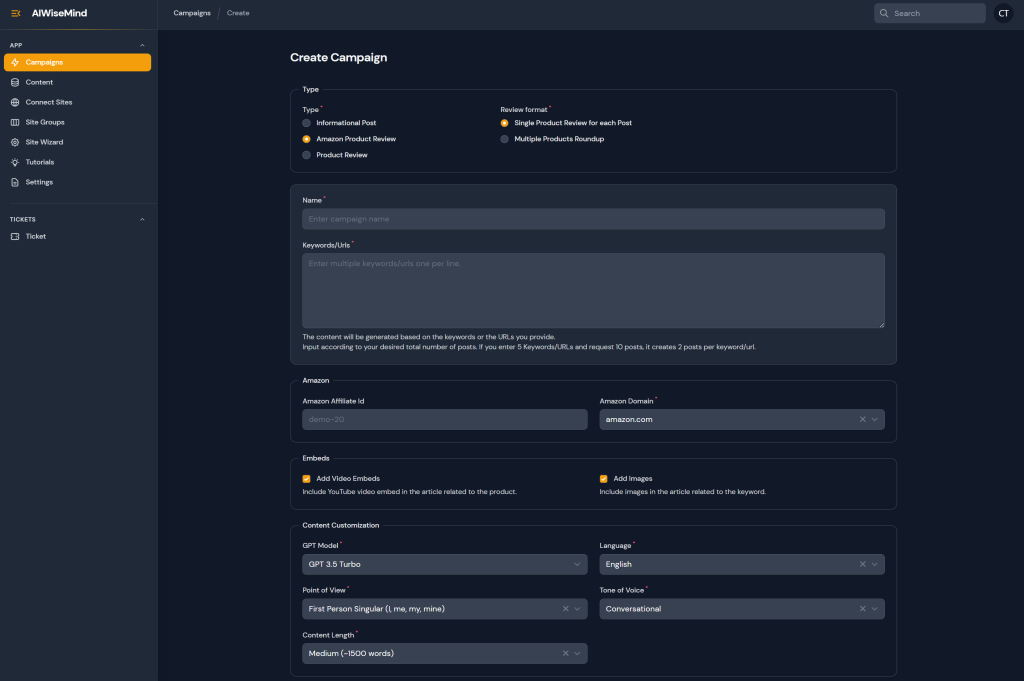With the rapid growth of e-commerce, having a robust product recommendation system can make a significant impact on user experience and sales. In this guide, we’ve crafted a comprehensive walkthrough for building a product recommendation agent specifically tailored for e-commerce websites with SmythOS. From setting up the API endpoints to managing data efficiently using Data Spaces, every step is designed to ensure simplicity and practical application.
Highlighting various processes such as data management and the use of Large Language Models like GPT-4 Turbo, this article helps streamline the implementation of a recommendation agent. We’ll also cover configuration tips to enhance the versatility of your agent, ensuring it can handle multiple product categories and query types. By following these steps, e-commerce site owners can integrate an intelligent recommendation system that provides relevant product suggestions to their customers, enriching their shopping experience.

Setup Overview
Creating the Product Recommendation Agent Canvas
To start, we’ll set up our agent canvas, which we’ll call “Product Recommendation.” This canvas will serve as the backbone of our recommendation agent. It’s essential to have a clear plan and structure, which is what this canvas will provide. We’ll then proceed to set up our API endpoint, which will handle user queries.

Configuring the API Endpoint
For the API endpoint, we’ll use the GET method and name this endpoint “Recommendation.” This endpoint will be responsible for providing product recommendations to users. We’ll create an input parameter labeled “Query” to capture user queries. This parameter will be mapped to a custom output also called “Query,” ensuring that the data input passes through the default query structure seamlessly.
Setting Up Input Parameters for User Queries
To proceed, we will set up the input parameter for user queries. Here, we map the user’s query to a custom output that the agent can process, allowing it to fetch the relevant data from our database or data sources. By organizing our components methodically—renaming them appropriately and adding descriptive labels—we’ll make our setup more manageable and efficient.
Data Management
Organizing Product Data in Data Spaces
To ensure our agent has access to accurate and well-organized data, we’ll use Data Spaces. Data Spaces help in segregating and managing product data efficiently. By doing so, we can categorize our products, which will be fetched based on user queries.
Utilizing Various Data Sources
Utilizing various data sources enriches the recommendations provided by the agent. For example, if we have data on best-selling products, user reviews, new arrivals, and high-rated products, we can pull from these different sources to offer more nuanced and precise recommendations.
Example: Managing Data for Gaming Headsets
Imagine we’re setting up a data space for gaming headsets. We’ll create categories such as best-selling headsets, new arrivals, and top-rated products. Each of these categories can be added to separate data spaces to avoid mixing up the data and to ensure accurate, context-specific recommendations.

Implementation Steps
Adding Data Lookup Components
Next, we add data lookup components to fetch the necessary information from our data sources. These components query the data spaces we’ve organized and then pass relevant data to the agent for further processing.

Leveraging LLM for Recommendations
We then leverage Large Language Models (LLM) like GPT-4 Turbo to generate product recommendations. By feeding the queried data into the LLM, we can produce insightful and relevant recommendations based on the input parameters.

Ensuring Adequate Context Windows
It’s crucial to ensure that the context windows provided by LLMs are large enough to handle the data sets being inputted. For extensive datasets, we use higher context window limits provided by models such as GPT-4 Turbo.
Configuration Details
Including Essential Details: Photos, Names, Prices
To make our recommendations more user-friendly, we include essential details in the responses, such as product photos, names, and prices. This visual and informational detail helps users make informed decisions quickly.
Setting Parameters and Triggers
Setting parameters and triggers allows us to define how and when the data should be processed and forwarded to the LLM prompt. We configure these settings to ensure the timely and accurate generation of recommendations.
Forwarding Query Results to LLM Prompt
Finally, the query results are forwarded to the LLM prompt. Here, the agent consolidates the data, processes it according to the predefined instructions, and generates a user-specific list of product recommendations.

Advanced Workflow
Creating Multiple Categories: Newest, Most Affordable, Most Expensive
To provide more refined recommendations, we create multiple categories such as the newest products, most affordable options, and the most expensive items. This categorization allows users to filter recommendations based on their preferences and criteria.
Adding Classifier for Query Categorization
We add a classifier to categorize and direct queries to the appropriate data lookup components. This classifier can identify different query types and route them through the correct channels for processing.
Configuring Classifier to Recognize Different Query Types
Configuring the classifier involves training it to recognize and distinguish between various types of queries. This ensures that users receive the most relevant recommendations based on their specific searches.
Execution and Testing
Ensuring Proper Classification and Query Handling
During execution and testing, we ensure that queries are classified and handled correctly. This involves running multiple tests to validate that our agent can accurately interpret and respond to diverse queries.
Interactive Testing Using Chat Embodiment
We utilize interactive testing using chat embodiment to simulate real user interactions. This hands-on testing approach helps us identify and troubleshoot any issues before the agent goes live.
Feedback and Iteration
Gathering feedback is essential for refining the agent. We iteratively improve the agent based on user feedback and performance metrics, ensuring it becomes more effective over time.

Customization Tips
Updating Data Sources
Regularly updating data sources ensures that the recommendations remain relevant and up-to-date. We incorporate new product information, reviews, and user preferences into our data spaces.
Keeping Data Spaces Organized
Maintaining organized data spaces is crucial. Clear categorization and regular updates help in managing data efficiently, preventing confusion and errors.
Integrating with Google Sheets and Airtable
Integrating our data spaces with tools like Google Sheets and Airtable can significantly enhance data management. These tools allow for easy updates and synchronization of product data, facilitating smoother operations.
User Benefits
Improving User Experience
By providing accurate and tailored product recommendations, we enhance the user experience on e-commerce sites. Users can quickly find products that meet their needs, improving their overall shopping experience.
Boosting Sales with Tailored Recommendations
Tailored recommendations not only improve user satisfaction but also boost sales. When customers find products that match their interests and needs, they are more likely to make a purchase.
Enhancing Customer Satisfaction
Our product recommendation agent contributes to higher customer satisfaction by making the shopping process more personalized and efficient. Satisfied customers are more likely to return, fostering customer loyalty.
Closing Thoughts
Encouragement to Use Native Components
We encourage you to utilize simple, native components in building your agents. This approach simplifies the development process and ensures robust functionality.
Suggestions for Feature Requests
Don’t hesitate to suggest new features or use cases. We’re always open to community feedback and eager to learn how we can improve our tools. You can reach out to us through Discord.
Join Our Community for More Insights
Join our community to stay updated on the latest features and best practices. Engaging with other users will provide you with additional insights and tips to maximize the effectiveness of your product recommendation agent.
Conclusion
Try It Out on Your E-Commerce Site
We invite you to try out this product recommendation agent on your e-commerce site. Implementing it can significantly enhance your site’s functionality and user experience.
Share Your Experience with Us
We’d love to hear about your experience using the agent. Sharing your feedback helps us improve and provides valuable insights to other users.
Stay Connected for More Features
Stay connected with us to learn about new features and updates. We’re constantly working on improvements and additions to our tools to better serve your needs.
Let’s make online shopping a more enjoyable experience for everyone, one recommendation at a time!



